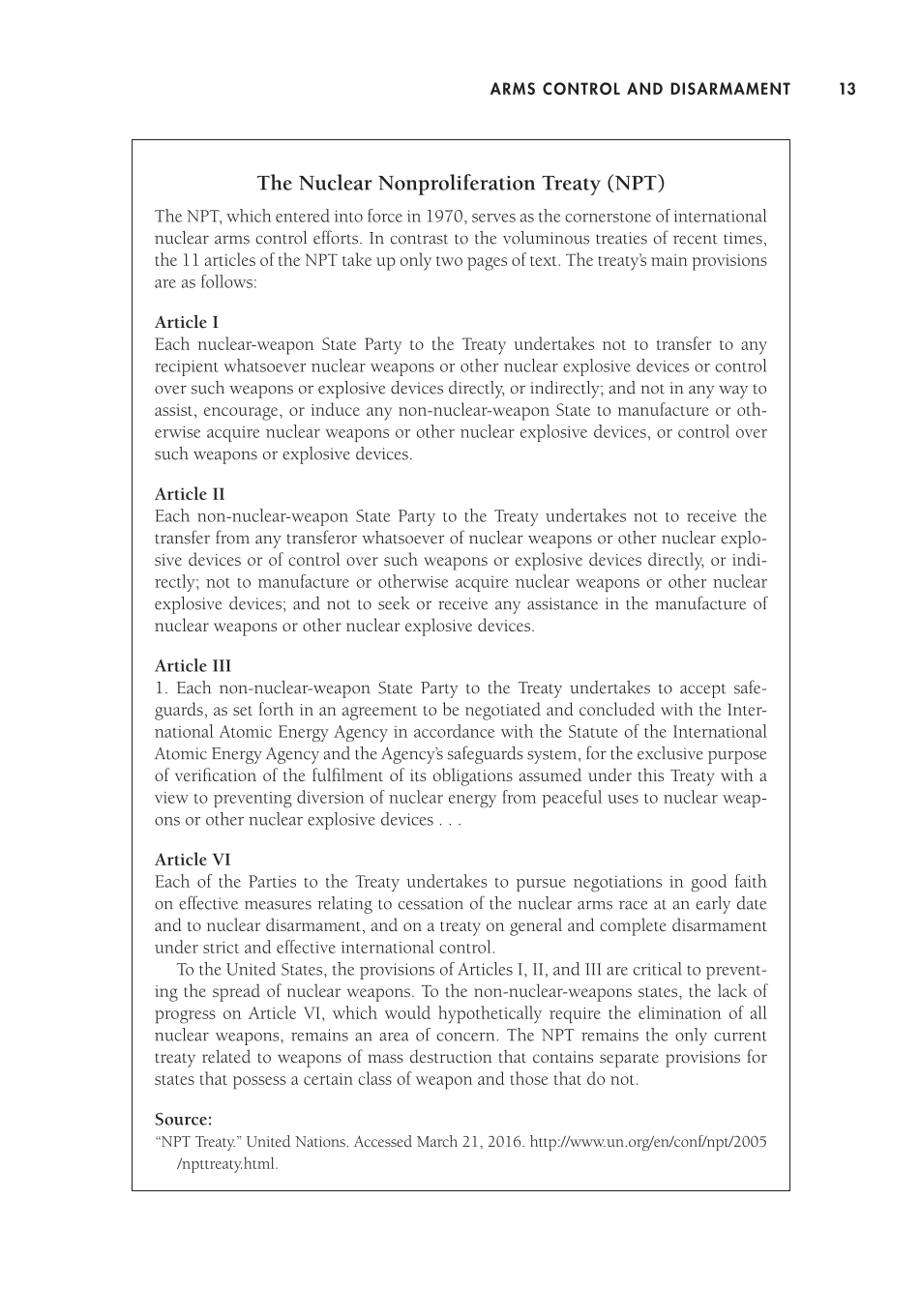Arms Control and Disarmament 13
The Nuclear Nonproliferation Treaty (NPT)
The NPT, which entered into force in 1970, serves as the cornerstone of international
nuclear arms control efforts. In contrast to the voluminous treaties of recent times,
the 11 articles of the NPT take up only two pages of text. The treaty’s main provisions
are as follows:
Article I
Each nuclear-weapon State Party to the Treaty undertakes not to transfer to any
recipient whatsoever nuclear weapons or other nuclear explosive devices or control
over such weapons or explosive devices directly, or indirectly; and not in any way to
assist, encourage, or induce any non-nuclear-weapon State to manufacture or oth-
erwise acquire nuclear weapons or other nuclear explosive devices, or control over
such weapons or explosive devices.
Article II
Each non-nuclear-weapon State Party to the Treaty undertakes not to receive the
transfer from any transferor whatsoever of nuclear weapons or other nuclear explo-
sive devices or of control over such weapons or explosive devices directly, or indi-
rectly; not to manufacture or otherwise acquire nuclear weapons or other nuclear
explosive devices; and not to seek or receive any assistance in the manufacture of
nuclear weapons or other nuclear explosive devices.
Article III
1. Each non-nuclear-weapon State Party to the Treaty undertakes to accept safe-
guards, as set forth in an agreement to be negotiated and concluded with the Inter-
national Atomic Energy Agency in accordance with the Statute of the International
Atomic Energy Agency and the Agency’s safeguards system, for the exclusive purpose
of verification of the fulfilment of its obligations assumed under this Treaty with a
view to preventing diversion of nuclear energy from peaceful uses to nuclear weap-
ons or other nuclear explosive devices . . .
Article VI
Each of the Parties to the Treaty undertakes to pursue negotiations in good faith
on effective measures relating to cessation of the nuclear arms race at an early date
and to nuclear disarmament, and on a treaty on general and complete disarmament
under strict and effective international control.
To the United States, the provisions of Articles I, II, and III are critical to prevent-
ing the spread of nuclear weapons. To the non-nuclear-weapons states, the lack of
progress on Article VI, which would hypothetically require the elimination of all
nuclear weapons, remains an area of concern. The NPT remains the only current
treaty related to weapons of mass destruction that contains separate provisions for
states that possess a certain class of weapon and those that do not.
Source:
“NPT Treaty.” United Nations. Accessed March 21, 2016. http://www.un.org/en/conf/npt/2005
/npttreaty.html.




























































































































































































































































































































































































































